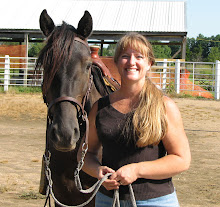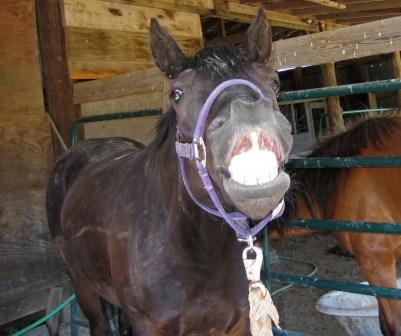Our last evening a few of us went to downtown St. Charles - very old part of town with cobblestone streets. We found a small alley and took a self portrait on the steps. Front to back we have me, Janet, Julie, Vic on the left and Kathy in the back. We had a great time!

Vic doing some measuring...

Trish is working on the bottom of a hoof...

Natalie checking out her work...

Nancy is working on a hoof...

Kathy is working on the bottom of her hoof...

Julie is checking out her work from the bottom of the hoof...

Natalie is asking John about something on the hoof while Vic watches and listens. There was a lot of that - someone would ask a great question and whoever was close would zoom in for the answer.

Chris checking out the bottom of the hoof...

Chris and Vic are working at their table...

Chris and Julie working on day 2...

Carrie and her hoof on day 1...

Beth doing some measuring...

April is sanding the hoof wall...

April, Ann (instructor) and Janet discuss the notched hoof. The purpose of notching the hoof was to show how much sole really was there and to let us know that we were not going to hurt anything by going too deep. It was very interesting!

We trim to the model, and the wild horse is our model. We realize that wild horses eat differently and travel differently than our domestic horses. Since our domestic horses live differently, it is up to us to try and make their lives as natural as possible, and following this way of trimming is one of those ways.
I have been reading a lot about barefoot for quite a while, and there is a lot of good information and bad information out there, not to mention information that makes you say "WHAT?" This is one that has made the most sense to me so far, and sticking to the trim guidelines will really help our horses. I need to get organized and keep a journal of what I am doing with each one I trim.
There is a round rasp to rasp the sole with. At first I was a little nervous because you hear about leaving the sole alone. Come to find out, compacted sole can look just like live sole, and it also works the same as a shoe as in it is very hard so the hoof mechanism cannot work properly and blood can't circulate thru that hoof. Made sense after I thought about it. The round rasp cleans up the bottom of the foot, and also stimulates growth.
Sanding the outside of the hoof wall is supposed to do the same thing. I don't sand the coronary band, just up to it, and that sanding will help stimulate hoof growth. I will be thinking of little tid-bits as time goes on. I am going to read thru my notes too...there was a lot of information and I don't want to forget anything.
What a fun group I got to share this with!
Until later...Karen and Tripp whose pigeon toed-ness does not scare me any more! :-)



No comments:
Post a Comment